I’ll always remember my first job move in PR — from a small NY-based shop specializing in motion pictures, theater and music to Hill and Knowlton with its blue chip clientele of Fortune 500 companies. I went from leveraging the power of celebrity to leveraging business and hard news to gain reporter favor – from the “back of the book” to the “front of the book” in newsweekly parlance. This was fine by me since the outlets remained mostly the same and the new subject matter was much more substantive and cerebrally satisfying.
Back then, few “hits” were more valued in PR circles than landing a segment on one of the TV network evening newscasts with Dan Rather, Tom Brokaw or Peter Jennings. It was the holy grail of a PR “placement,” albeit in an admittedly easier to ply media ecosystem as compared to today’s journalistic shit show.
These nightly news programs were at the pinnacle of quality broadcast journalism, and as such, had the capacity to drive consumer, regulatory and even legislative action. The network news divisions soon bowed longer-form, magazine-format shows like “60 Minutes,” “20/20,” and “48 Hours,” from which only one continues to catalyze day-after watercooler buzz, i.e., real-time Twitter noise today.
With the onset of cable, TV splintered to a point where today a program exists for every taste and on any topic, no matter how pedestrian. (Kim and Kanye, anyone?)
For its part, cable news eventually morphed into bloviating talking heads that succeeded in dividing our self-selecting viewing nation. One radio news network even (dumbly) promoted its partisan approach to journalism, which ultimately proved fatal. At least the Fox News Channel declared itself fair & balanced – as disingenuous as that is.
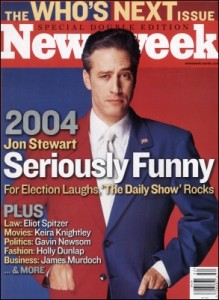 The caustic culture of cable news gave rise to the next generation of TV news. Jon Stewart and his Comedy Central cohort Stephen Colbert took a no holds barred look at the day’s headlines, added a comic sensibility, and in so doing, drew huge numbers especially among the important 18-35 demo.
The caustic culture of cable news gave rise to the next generation of TV news. Jon Stewart and his Comedy Central cohort Stephen Colbert took a no holds barred look at the day’s headlines, added a comic sensibility, and in so doing, drew huge numbers especially among the important 18-35 demo.
Stewart and Colbert validated SNL News’s irreverent delivery of the nightly news. The Onion’s former digital director Baratunde Thurston and The New Yorker‘s latest hire Andy Borowitz took the genre to even greater satirical heights. All the while, quality TV journalism suffered as the once-dominant broadcast evening news programs continued to lose audience share and influence, while cable news fell far short of the promise of Murrow. (Thank goodness for PBS NewsHour.)
Enter “The Newsroom” – a hybrid docu-dramatic offering from HBO and the very hot Aaron Sorkin that may usher an entirely new genre of news delivery. It’s ostensibly an entertainment show that, not unlike Sorkin’s The West Wing, draws its plot from recognizable people and events. In the Newsroom, however, Sorkin has taken a page from Jon Stewart by showing actual newsclips and calling out newsmakers by name.
The premise is simple: a behind the scenes look inside a national cable news program that has declared an end to histrionics and partisan commentary to gin up ratings. The newsroom in question, modelled after CNN and its Time-Warner parent, seeks a return to the glory days of Murrow, Cronkite, Brokaw, Rather, etc. when TV journalism was not considered an oxymoron. In fact, Dan Rather penned a fawning review of “Newsroom” for Gawker (of all places).
Judging from the Twitterstream, HBO “The Newsroom” is destined for greatness. Sure, there are some youthful online scribes who panned the show and its creator – mostly because they lack an historical appreciation for the glory days of TV news or have a personal thing against Mr. Sorkin’s rat-a-tat dialogue and perceived Hollywood sensibility.
Others criticize the show for its political courage in taking a page from Costas-Sandusky when ferreting out distortion and lies in an interview — something sorely lacking in the likes of CNN’s Candy Crowley or NBC News’s David Gregory who sit strangely silent as highly dubious political talking points pollute their airwaves unchallenged.
I love this program, but also have mixed feelings. Sure it’s must-watch television. But it’s also sad to think that it has taken the programming department for a premium cable entertainment network to accomplish something the broadcast and cable networks’ news divisions have thus far failed to do either out of commercial considerations or some warped sense of feigning balance.
Meanwhile the on-air talent at real TV news organizations continue to get schooled daily by well-oiled (and funded) political s̶u̶r̶r̶o̶g̶a̶t̶e̶s̶ ̶ propagandists. Mike Wallace, we miss you already.
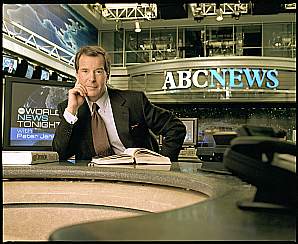
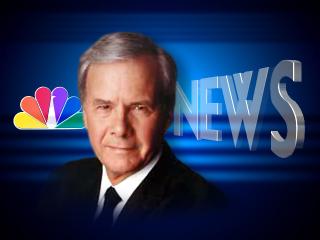

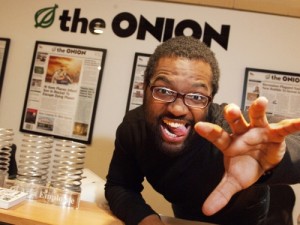
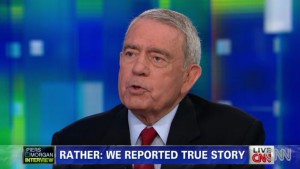



<span>Thank you for the great post. I look forward to many more soon. </span>
<span> </span>
<span>Upon becoming very emotional at the opening speech of the first episode (powerful!), I realized Sorkin really has something with this show. Now I’m eagerly watching each episode and hoping that the ripple through the mass media and citizens alike will be powerful. We need more shows like this. </span>
Thank you for the great post. I look forward to many more soon.
Upon become very emotional at the opening speech of the first episode (powerful!), I realized Sorkin really has something with this show. Now I’m eagerly watching each episode and hoping that the ripple through the mass media and citizens alike will be powerful. We need more shows like this.